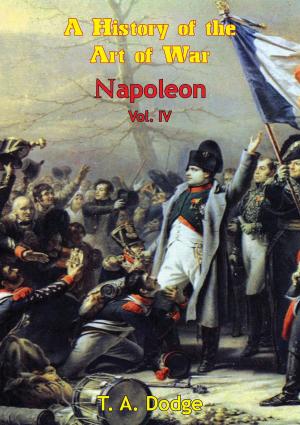Operational Art And The 1813 Campaign In Germany
Nonfiction, History, Spain & Portugal, France, Military| Author: | Commander John T. Kuehn | ISBN: | 9781782893127 |
| Publisher: | Wagram Press | Publication: | August 15, 2014 |
| Imprint: | Wagram Press | Language: | English |
| Author: | Commander John T. Kuehn |
| ISBN: | 9781782893127 |
| Publisher: | Wagram Press |
| Publication: | August 15, 2014 |
| Imprint: | Wagram Press |
| Language: | English |
The purpose of this monograph is to search for, identify, and discuss the emergence of elements of operational art during the Napoleonic wars. James Schneider has tied the emergence of operational art to the technological advances of the industrial revolution; specifically the rifled musket, steam locomotive, and instantaneous communications theoretically possible with telegraph. Schneider lists eight "key attributes" that are used in this monograph as elements of operational art. These elements are: a distributed operation, distributed campaign, continuous logistics, instantaneous command and control, operationally durable formations, operational vision, a distributed enemy, and distributed deployment...This monograph uses Schneider’s elements as the criteria to establish the presence or absence of operational art in the 1813 campaign in Germany.
The 1813 German campaign is examined from the viewpoint of Napoleon’s adversaries; principally the Prussians, Russians, and Austrians. This campaign was used because it represents Napoleonic warfare at a very high level of sophistication by both the Allies and their French opponents. Both sides were now organized along the French model with field armies, corps, and divisions as standard organizations. The armies that faced each other, while composed of some veteran troops, were mostly the result of massive conscription across all classes of society. All of the protagonists were essentially nations in arms. The complexity of this campaign, there were approximately seven field armies in Germany by the fall of 1813, lends itself well to a search for Schneider’s elements. The course of this campaign followed a pattern of attrition and exhaustion which, too, favors an operational analysis vice analysis along the lines of classical strategy.
The purpose of this monograph is to search for, identify, and discuss the emergence of elements of operational art during the Napoleonic wars. James Schneider has tied the emergence of operational art to the technological advances of the industrial revolution; specifically the rifled musket, steam locomotive, and instantaneous communications theoretically possible with telegraph. Schneider lists eight "key attributes" that are used in this monograph as elements of operational art. These elements are: a distributed operation, distributed campaign, continuous logistics, instantaneous command and control, operationally durable formations, operational vision, a distributed enemy, and distributed deployment...This monograph uses Schneider’s elements as the criteria to establish the presence or absence of operational art in the 1813 campaign in Germany.
The 1813 German campaign is examined from the viewpoint of Napoleon’s adversaries; principally the Prussians, Russians, and Austrians. This campaign was used because it represents Napoleonic warfare at a very high level of sophistication by both the Allies and their French opponents. Both sides were now organized along the French model with field armies, corps, and divisions as standard organizations. The armies that faced each other, while composed of some veteran troops, were mostly the result of massive conscription across all classes of society. All of the protagonists were essentially nations in arms. The complexity of this campaign, there were approximately seven field armies in Germany by the fall of 1813, lends itself well to a search for Schneider’s elements. The course of this campaign followed a pattern of attrition and exhaustion which, too, favors an operational analysis vice analysis along the lines of classical strategy.















